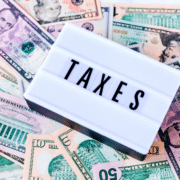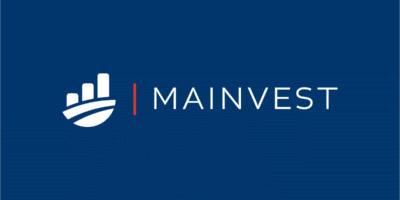The public utilities one enjoys, irrespective of their financial status, have to be paid for and maintained. Taxes are the way governments collect money to fund these projects. Therefore, as an investor, knowing the taxes your investment securities attract and how to file them is of utmost importance to avoid hefty penalties or even jail time.
As such, the federal government, in addition to taxing investment income, requires a portion of any capital gains realized, dividend payouts, rental income, and any interest income accrued.
By the end of this guide, you will have a better understanding on:
- Why the holding period of investments matter in taxation
- What are the taxation rates on different investment incomes
- How best to invest for reduced tax burden
Tax on interest
The IRS views interest as ordinary income, attracting a tax rate that corresponds to the marginal tax burden of an individual. Thus, interest income is the most taxed investment income option to the extent that zero-coupon bonds attract taxation on the annual interest accruals.
The only way to escape the taxman’s clutches and still earn interest income is by investing in municipal bonds and US treasury securities. They attract no state or federal taxation. Investors in higher tax brackets use these securities to lower their tax burden, although they pay a lower nominal interest rate.
Suppose an investor pays federal tax at the rate of 37%, nominal, and receives annual interest of $2500 on a 5% high-yield corporate bond having invested $50000. Their tax burden increases by $925. If the same investor had held municipal bonds paying 3% interest, they would owe the taxman $0 in taxes, and their $1500 would be intact.
Tax on dividends
Dividends represent an investor’s share of the profits made by a company they have a stake in. Therefore, dividends payouts are incomes that have already had a meeting with the taxman. It is for this reason that dividend payouts attract lower tax rates compared to other investment instruments.
However, the type of dividend determines how much of a tax break an investor enjoys:
-
Qualified dividends
Are dividends paid out by publicly-traded companies in the US or those with double taxation treaties with the US and recognized by the IRS. They attract lower rates than non-qualified dividends depending on the individual or household income level, as shown in the table below.
|
Tax rate |
Taxable income: single people | Taxable income: couples filing jointly | Taxable income: household head |
Taxable income: couples filing separately |
|
0% |
$0-$39375 | $0-$78750 | $0-$52750 | $0-$39375 |
|
15% |
$39376-$434550 | $78751-$488850 | $52751-$461700 |
$39376-$244425 |
|
20% |
over $434550 | over $488850 | over $461700 |
over $244425 |
-
Non-qualified dividends
Dividends not meeting the qualification criteria attract a tax rate at the ordinary income tax rate, which tends to be higher than the corresponding qualified dividend tax rate. The table below shows the income tax brackets and the taxation rate.
|
Tax rate |
Taxable income: single people |
Taxable income: couples filing jointly |
Taxable income: household head |
Taxable income: couples filing separately |
|
10% |
$0 to $9,700 | $0 to $19,400 | $0 to $13,850 | $0 to $9,700 |
|
12% |
$9,701 to $39,475 | $19,401 to $78,950 | $13,851 to $52,850 |
$9,701 to $39,475 |
|
22% |
$39,476 to $84,200 | $78,951 to $168,400 | $52,851 to $84,200 |
$39,476 to $84,200 |
|
24% |
$84,201 to $160,725 | $168,401 to $321,450 | $84,201 to $160,700 |
$84,201 to $160,725 |
|
32% |
$160,726 to $204,100 | $321,451 to $408,200 | $160,701 to $204,100 |
$160,726 to $204,100 |
|
35% |
$204,101 to $510,300 | $408,201 to $612,350 | $204,101 to $510,300 |
$204,101 to $306,175 |
| 37% | Over $510,300 | Over $612,350 | Over $510,300 |
Over $306,175 |
For example, if one earns yearly dividends worth $5000, qualified, with their annual income being $180000, the tax burden would increase by $750, 15% of $5000.
On the other hand, a coworker in the same department with the same income and dividend income but non-qualified would have their tax burden higher by 850-dividend income taxed at 32%, hence a $1600.
In addition to investing in equities that meet the threshold of qualified dividends, an investor can further reduce the dividend tax rate by diversifying their portfolio with 401k and IRA accounts.
Tax on mutual
Mutual funds are investment instruments comprising securities funded by the contributions of their members. This portfolio either attracts returns subject to the nominal income tax rate or the capital gains tax rate.
The taxation rate is dependent on the holding period of the investment asset by the mutual fund company.
Income from the sale of mutual fund shares attracts interest at either capital gains rate or income rate depending on period held: for less than a year income tax rate and for more than a year capita gains tax rate. Thus, the treatment of all mutual fund distributions is similar to that of selling shares.
As such, distribution and shares qualifying for taxation at capital gains rate attract a tax burden of:
- $0 for those between 12% and 10% tax bracket.
- 15% of the capital gain for those between 22%-part of 35%-up to $523600, tax brackets.
- 20% of capital gains for those in the 35% tax bracket earning 523600 and those in the 37% tax bracket.
For example, an investor in a mutual fund holding REITs for eight months sells it and distributes $1000 to all its shareholders, which burdens a taxpayer in the 22% tax bracket with $220 in taxes.
However, if the same asset had been held for three years and then disposed of at the same price, this shareholder would only have to pay $150 in taxes.
Tax on investments in a 401k
401k are retirement investment plans initiated by an employer for their employees. There are two available 401k types:
- Traditional
- Roth 401k plans
The difference is on account of when the taxation burden is honored.
- Traditional 401k plans are pre-tax, attract no taxation on the contribution, but their withdrawals attract taxation at the prevailing nominal income tax rate.
- Roth 401k plans, on the other hand, attract taxation on assistance with no further taxation on them and their interests during withdrawal.
The best approach to 401k taxation burden minimization is tax-loss harvesting. It involves selling off underperforming investment assets in a 401k portfolio with the losses offsetting the accrued tax obligations. Taking a loan from the 401k also attracts no taxation, unlike taking a distribution. However, the loan cannot exceed 50% of the 401.
























Comments